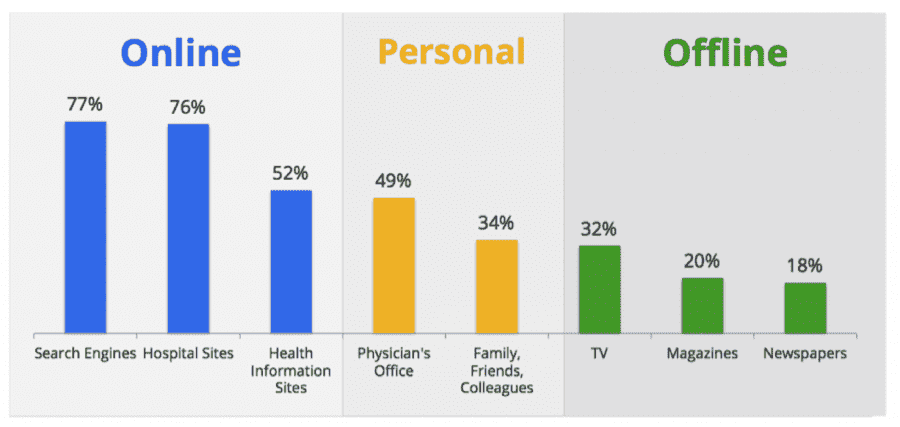Every four years, soccer (yes, we’re calling it soccer here – we’re located in the U.S.) takes the attention of the world for a full month for the World Cup. Well, in reality, it has the attention of most of the world as the number one sport at all times, but in the United States, it becomes big every four years. Our office has a World Cup pool (I was in second place until late last week), and I find myself watching and enjoying games I have no real rooting interest in, like Costa Rica vs. Greece. And it’s not just me – the ratings are staggering.
The USA vs. Portugal Neilson ratings were released and an estimated 24.7 million people watched the game. To put this in perspective, this is more than the number of people that watched the NBA finals, and does not count those that streamed the game or watched in packed stadium viewing parties. And the game started while most people were at work!
Things are changing, and they’re important to take notice of – especially for those in marketing.
Smart marketers pay attention to sports trends.
Sports are often a reflection of society, and what we’re seeing now with soccer and the World Cup is indicative of several cultural trends. Smart marketers are watching and making adjustments accordingly.
What do the World Cup trends tell us about marketing?
The World Cup is getting higher ratings than ever, and Major League Soccer is growing at a rapid rate. Major League Soccer is now profitable, and ESPN and Fox are overpaying for soccer rights because they see the pending value. All of this reflects the changes that are happening in our world, especially in the United States. Smart marketers aren’t just watching the World Cup, they’re studying the behavior patterns associated with it, cultural trends, and looking for opportunities that are presenting themselves as a result.
Over the last few weeks, the parallels have become glaring. A closer study of the World Cup reveals five things that should have a major impact on your marketing strategy:
- Globalization – Soccer is a global sport, and globalization is now affecting almost everything that we do. The world has become exponentially smaller in the past 50 years. It is easier than ever to travel and produce digital goods. If there is not a global element to your business, you could be missing an incredible opportunity. In the healthcare industry, some examples of opportunities may include:
- Medical tourism, which is currently exploding. Larger practices, highly specialized practices, and hospitals must be taking an active role in attracting patients from other parts of the world. This has moved from very difficult to huge opportunity in the past 20 years. Patients will travel around the world if they’re getting the specialized care they need.
- Digital services, including either product or service. Many medical professionals may be able to provide digital goods – reports, advice, etc. that are helpful to patients. This could even include a medical reference site for a very specific condition that includes advertising. Video conferencing presents an opportunity to advise patients or potential patients from anywhere in the globe.
Think outside of the box, and think about what you can do to influence others across the globe. The technology is now there, and there has never been a better time.
- Multi-Lingual Marketing – Similar to globalization, but at a local level. Univision (Spanish Broadcasting) broadcasts of the World Cup remind us that there is a significant and often underserved Hispanic population that is continuously growing. Smart marketers are capitalizing on multi-lingual advertising campaigns and marketing efforts across ethnic groups. In major metropolitan areas, this opportunity is greatly expanded.
- Shorter Attention Spans – In younger demographics, baseball is disappearing into obscurity and soccer is exploding in popularity. One parallel we have noticed that is translating into the marketing sphere is that people are looking for higher action in a shorter time frame. Baseball games often take over 3 hours and move slowly, leading to declining popularity. Soccer games have two 45-minute halves and the action almost never stops, leading to increasing popularity.Your marketing needs to do the same. If you’re expecting someone who’s not doing extensive research to stay on your website for long periods of time, or read text heavy ads, you will also begin to disappear. Healthcare marketing needs to be succinct and interesting. Give people what they need to know quickly and in an engaging way. On a website, you usually have seconds before a user decides if they are going to stay or go to another site. Engage them with a quick message and invite them for more.
- Streaming – The World Cup has a high number of views from people streaming the games, something not taken into account in the aforementioned viewership statistics. People are consuming more digital content every day. YouTube is the second most popular search engine (above Bing, Yahoo, and any other you may hear of). Create video for your website. Distribute it over multiple channels. I know one chiropractor who does his own “Ask the Doctor” style video show. Take advantage of the video culture that is currently prevalent, and remember that your audience is online now more than ever.
- New Is Coming – Just like anything, we can lament the old going away, or we can embrace the new. Most hospitals are entrenched in print marketing. That’s great if you’re looking to target seniors and procedures that are specific to them. If you’re looking to capture the next generation, specifically those under the age of 50, you’re going to need to have a significant online presence. The data from recent studies indicates that new media is the best way to reach new patients. They are currently doing their research:

You don’t have to like the new media landscape or use it personally. However, your customers do, so your business needs to as well.
As we continually watch cultural trends, it gives us consistent insight into the minds of our customers and makes us more effective at what we do. What other cultural trends have you been seeing that have strong correlations into the marketing world? Let us know in the comments below.


